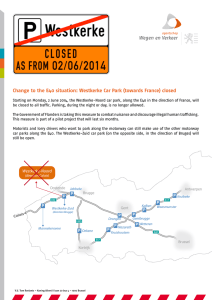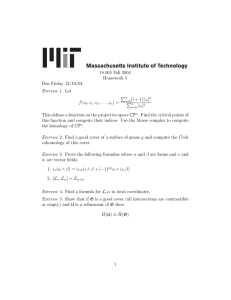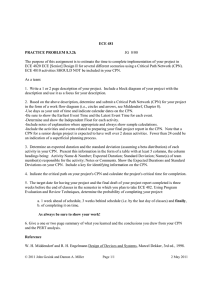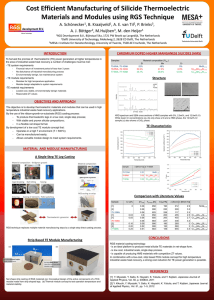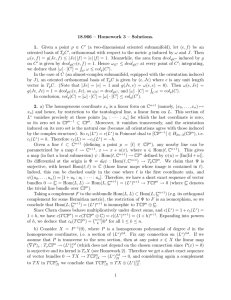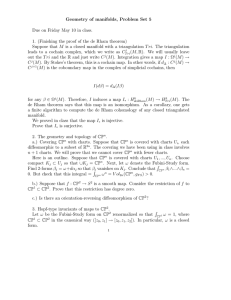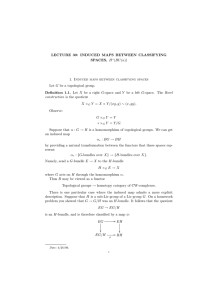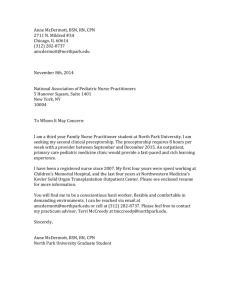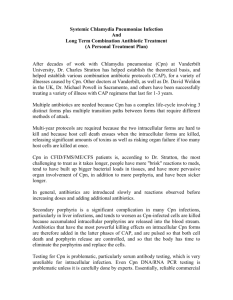18.966 – Homework 3 – ... Let (M, ω) be a symplectic manifold, ...
advertisement
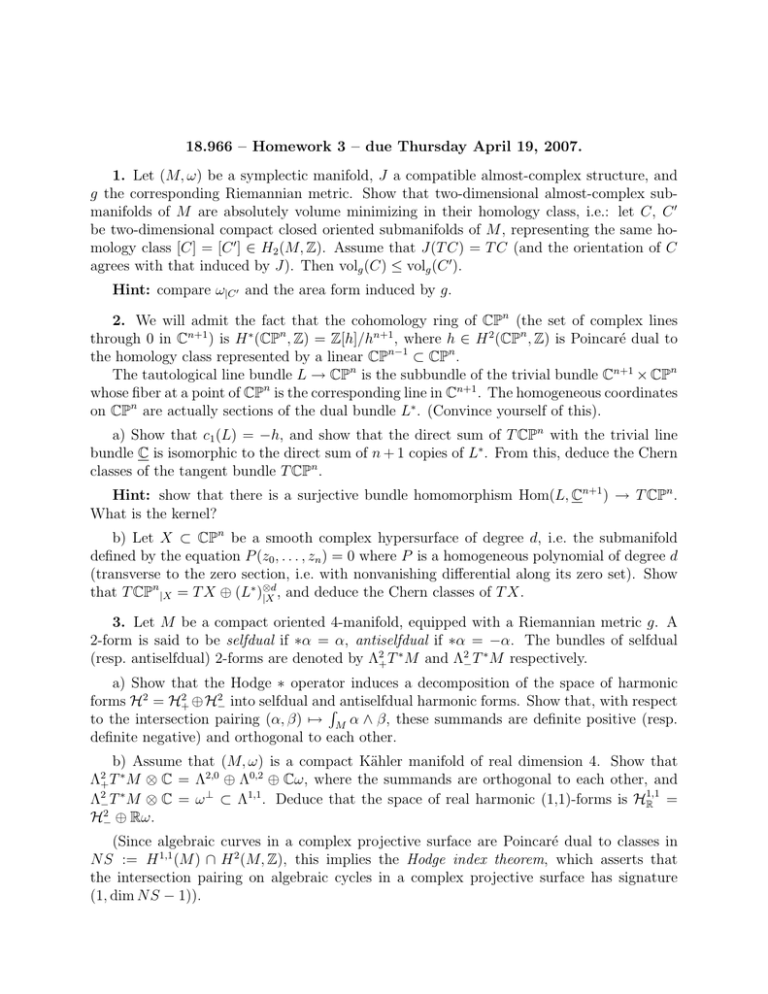
18.966 – Homework 3 – due Thursday April 19, 2007. 1. Let (M, ω) be a symplectic manifold, J a compatible almost-complex structure, and g the corresponding Riemannian metric. Show that two-dimensional almost-complex sub­ manifolds of M are absolutely volume minimizing in their homology class, i.e.: let C, C ′ be two-dimensional compact closed oriented submanifolds of M , representing the same ho­ mology class [C] = [C ′ ] ∈ H2 (M, Z). Assume that J(T C) = T C (and the orientation of C agrees with that induced by J). Then volg (C) ≤ volg (C ′ ). Hint: compare ω|C ′ and the area form induced by g. 2. We will admit the fact that the cohomology ring of CPn (the set of complex lines through 0 in Cn+1 ) is H ∗ (CPn , Z) = Z[h]/hn+1 , where h ∈ H 2 (CPn , Z) is Poincaré dual to the homology class represented by a linear CPn−1 ⊂ CPn . The tautological line bundle L → CPn is the subbundle of the trivial bundle Cn+1 × CPn whose fiber at a point of CPn is the corresponding line in Cn+1 . The homogeneous coordinates on CPn are actually sections of the dual bundle L∗ . (Convince yourself of this). a) Show that c1 (L) = −h, and show that the direct sum of T CPn with the trivial line bundle C is isomorphic to the direct sum of n + 1 copies of L∗ . From this, deduce the Chern classes of the tangent bundle T CPn . Hint: show that there is a surjective bundle homomorphism Hom(L, Cn+1 ) → T CPn . What is the kernel? b) Let X ⊂ CPn be a smooth complex hypersurface of degree d, i.e. the submanifold defined by the equation P (z0 , . . . , zn ) = 0 where P is a homogeneous polynomial of degree d (transverse to the zero section, i.e. with nonvanishing differential along its zero set). Show that T CPn |X = T X ⊕ (L∗ )⊗d |X , and deduce the Chern classes of T X. 3. Let M be a compact oriented 4-manifold, equipped with a Riemannian metric g. A 2-form is said to be selfdual if ∗α = α, antiselfdual if ∗α = −α. The bundles of selfdual (resp. antiselfdual) 2-forms are denoted by Λ2+ T ∗ M and Λ2− T ∗ M respectively. a) Show that the Hodge ∗ operator induces a decomposition of the space of harmonic 2 2 forms H2 = H+ ⊕ H− into selfdual and� antiselfdual harmonic forms. Show that, with respect to the intersection pairing (α, β) 7→ M α ∧ β, these summands are definite positive (resp. definite negative) and orthogonal to each other. b) Assume that (M, ω) is a compact Kähler manifold of real dimension 4. Show that C = Λ2,0 ⊕ Λ0,2 ⊕ Cω, where the summands are orthogonal to each other, and C = ω ⊥ ⊂ Λ1,1 . Deduce that the space of real harmonic (1,1)-forms is HR1,1 = Λ2+ T ∗ M ⊗ Λ2− T ∗ M ⊗ 2 H− ⊕ Rω. (Since algebraic curves in a complex projective surface are Poincaré dual to classes in N S := H 1,1 (M ) ∩ H 2 (M, Z), this implies the Hodge index theorem, which asserts that the intersection pairing on algebraic cycles in a complex projective surface has signature (1, dim N S − 1)).
